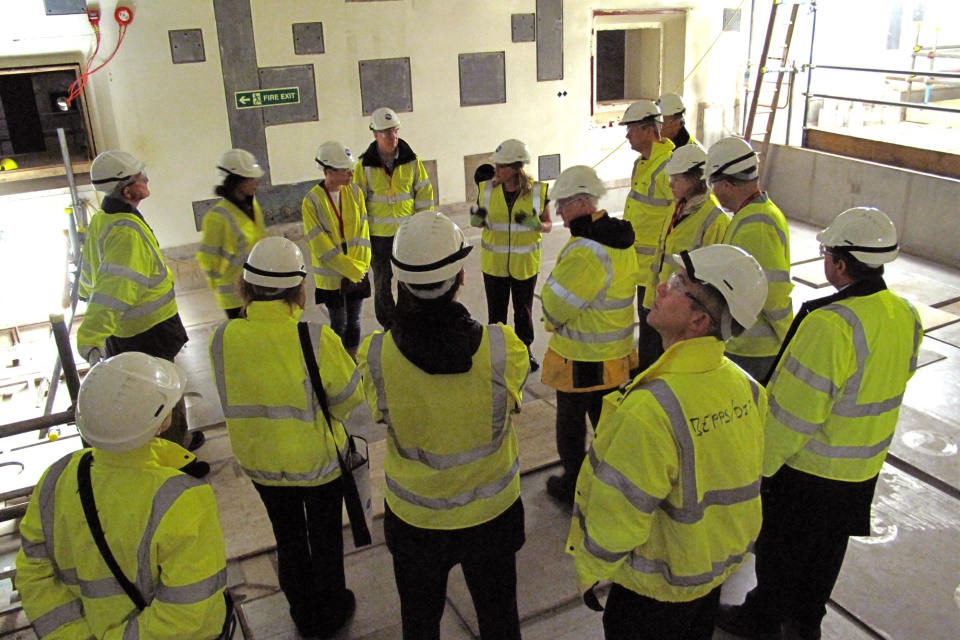On the 1st May 2014, CoRWM visited the Sellafield Site. CoRWM is responsible for scrutinising Government and the NDA on the long term management of higher activity radioactive wastes. The visit allowed CoRWM to be informed on the current progress and challenges in the management of these wastes at the site.
At the Pile Fuel Storage Pond Facility, CoRWM were able to see the progress in removal of fuels and sludge from the pond in various states. Those of the Committee who had previously visited the facility were generally impressed by the progress made at the pile fuel pond and the dynamic approach to project management that facilitated simultaneous progress on a number of work streams. These work streams included retrievals of oxide and other fuels, retrieval and treatment of sludges, retrieval and treatment of other pond wastes and imaging of the pond interior to improve knowledge of its contents.
CoRWM was briefed on the other three legacy facilities; the Magnox storage and decanning facility, the pile fuel cladding solo and the Magnox swarf storage silos.
The Committee visited the Box Encapsulation Plant that was under construction and its associated stores. CoRWM learned that the delivery of the plant is a priority project as it will receive Intermediate Level Waste (ILW) from the legacy facilities.

CoRWM also visited the Waste Encapsulation Plant Site and the Windscale Advanced Gas Cooled Reactor Intermediate Level Store.
CoRWM was also impressed with the transferred use of existing technology from other fields. For example, making use of sonar imaging techniques developed for the oil and gas exploration industry, together with robotic systems to image the interior of the ponds without the high costs of developing novel instrumentation.
Some of CoRWM’s members had not visited the Sellafield site for three years and remarked on the visual changes and change in mind-set of those that worked there to one of delivery focusing on the end point. They also remarked that staff seemed very aware of the interdependencies and timescales for commissioning new facilities, including making changes to unused facilities to reduce wherever possible the number of delays to getting the waste into safe and robust interim storage.

